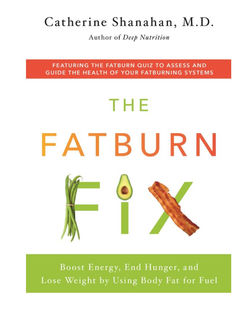"Eat meat and vegetables, nuts and seeds, some fruit, little starch and no sugar. Keep intake to levels that will support exercise but not body fat."
- Greg Glassman in World Class Fitness in 100 Words

WE RECOMMEND BASING YOUR DIET ON REAL FOOD: MEAT, FAT, SEASONAL FRUITS & VEGGIES, NUTS, AND SEEDS. MANY HAVE OBSERVED THAT KEEPING YOUR GROCERY CART TO THE PERIMETER OF THE STORE WHILE AVOIDING THE AISLES IS A GREAT WAY TO PROTECT YOUR HEALTH. FOOD IS PERISHIBLE. THE STUFF WITH A LONG SHELF LIFE IS ALL SUSPECT.
Check out this incredibly informative series of lectures from the CrossFit Health Foundation and nutrition-related episodes of our BRIO in the Box Podcast
A collection of over 100 easy, delicious, whole food recipes courtesy of CrossFit.com

About Jocelyn
Jocelyn has been the co-owner of CrossFit BRIO since 2008. She is a Certified Strength and Conditioning Coach, CrossFit Level 4 trainer, CrossFit Seminar Staff member, and regular content contributor on CrossFit.com. She has an undergraduate and a Master's degree in Finance and Marketing Management and in 2024 completed a Masters of Science in Human Nutrition.
Jocelyn uses a unique combination of her experience working with real people for the last 16 years, her knowledge of business, economics, & statistics, and her deep understanding of the science of nutrition, to sift through the confusing and contradictory world of what to eat. She distills the data, shuts out the noise and nonsense, and brings you JUST THE FACTS.
At CrossFit BRIO and BRIO + Nutrition we empower you with the knowledge you need to own your health.
GET OFF THE CARBS, GET ADEQUATE PROTEIN, ENJOY FATS, AND SEE WHAT HAPPENS. YOU’LL COME OUT BETTER.
RECOMMENDED READING
 |  |  |  |  |
|---|---|---|---|---|
 |  |  |  |  |
 |  |  |  |  |
 |  |  |









![How We Actually Eat [BRIO in the Box Podcast Ep 008]](https://i.ytimg.com/vi/q4WU3P3wXPw/mqdefault.jpg 1x, https://i.ytimg.com/vi/q4WU3P3wXPw/maxresdefault.jpg 2x)
![Food Marketing Scams [BRIO in the Box Podcast 030]](https://i.ytimg.com/vi/eB_BqlH7dWM/mqdefault.jpg 1x, https://i.ytimg.com/vi/eB_BqlH7dWM/maxresdefault.jpg 2x)
![Keeping it Together on Holidays [BRIO in the Box Podcast ep 033]](https://i.ytimg.com/vi/HsXquDNYvoE/mqdefault.jpg 1x, https://i.ytimg.com/vi/HsXquDNYvoE/maxresdefault.jpg 2x)
![What it means to be "Healthy" [BRIO in the Box Podcast ep 041]](https://i.ytimg.com/vi/eHgY32rL-XA/mqdefault.jpg 1x, https://i.ytimg.com/vi/eHgY32rL-XA/maxresdefault.jpg 2x)
![The best, worst, and most overrated food you can eat [BRIO in the Box podcast ep 044]](https://i.ytimg.com/vi/bXa9XwBmQQU/mqdefault.jpg 1x, https://i.ytimg.com/vi/bXa9XwBmQQU/maxresdefault.jpg 2x)
![Eating Well Away From Home - [BRIO in the Box Podcast ep 046]](https://i.ytimg.com/vi/K897-n0kZhM/mqdefault.jpg 1x, https://i.ytimg.com/vi/K897-n0kZhM/maxresdefault.jpg 2x)
![The Carnivore Diet [BRIO in the Box Podcast Ep 056]](https://i.ytimg.com/vi/2KKJEmhTV9s/mqdefault.jpg 1x, https://i.ytimg.com/vi/2KKJEmhTV9s/maxresdefault.jpg 2x)
![No Sh*t November Nutrition Challenge and Book Club [BRIO in the Box Podcast ep 060]](https://i.ytimg.com/vi/q0swr7beaHY/mqdefault.jpg 1x, https://i.ytimg.com/vi/q0swr7beaHY/maxresdefault.jpg 2x)








